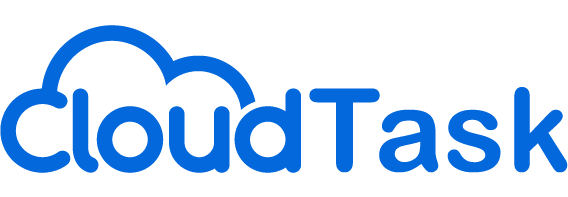Listen to this podcast on your favorite platform
In episode #137 of the Transform Sales Podcast: Sales Software Review, Eddie Bello interviews Bastien Paul, the CEO and co-founder of Hublead, a powerful tool that integrates LinkedIn with HubSpot to enhance outbound sales efforts.
Bastien explains how Hublead simplifies the process of tracking and managing LinkedIn activities within HubSpot, allowing sales teams to import contacts, track conversations, and measure performance efficiently.
The discussion delves into the software’s ideal users, key features, and the value it brings to both solopreneurs and larger sales teams.
A live demo highlights Hublead’s seamless integration and the actionable insights it provides, making it a must-have tool for businesses looking to optimize their LinkedIn outreach and sales pipeline management.
In case you missed it.... these are the highlights
What is Hublead, and how would you describe it?
Hublead is a specialized tool that integrates LinkedIn activities directly into HubSpot, providing a seamless way to track, manage, and analyze all your LinkedIn interactions within your CRM. It’s designed to enhance outbound sales efforts by allowing users to import contacts, conversations, and connection requests from LinkedIn into HubSpot, which traditionally focuses more on inbound processes.
By offering deep integration with HubSpot, the platform enables users to measure and optimize their LinkedIn outreach efforts, making it easier to track what’s working and what’s not. Whether you’re a solopreneur needing to streamline manual tasks or a larger team looking to scale your outbound efforts, Our platform provides the tools needed to improve efficiency and drive better sales outcomes through LinkedIn.
What type of buyers does Hublead serve best?
We serve HubSpot users who are heavily engaged in outbound sales efforts, particularly those who rely on LinkedIn as a key prospecting and relationship-building channel. The ideal buyers include:
- Solopreneurs and Small Teams: Individuals or small businesses that want to eliminate the manual work of importing contacts and conversations from LinkedIn into HubSpot. They benefit from automating these tasks and having everything integrated within their CRM.
- Sales Teams in Growing Companies: Teams of three or more salespeople who need to scale their outbound efforts, measure performance, and understand the effectiveness of their LinkedIn activities. These teams often require more advanced reporting and analytics to optimize their outreach strategies.
- Businesses Focused on Outbound Sales: Companies that have traditionally used HubSpot for inbound marketing but now need robust outbound capabilities to complement their sales processes. Our platform fills this gap by enabling them to track and measure LinkedIn activities within HubSpot, enhancing their overall sales strategy.
In short, Hublead is best suited for those who need to streamline and scale their LinkedIn prospecting efforts while maintaining a strong focus on outbound sales within HubSpot.
What does Hublead help them do that they couldn’t do before Hublead existed?
Before our platform existed, HubSpot users couldn’t easily track or manage their LinkedIn activities within their CRM. We changed that by providing a deep integration between LinkedIn and HubSpot, allowing users to:
- Automate the Import of LinkedIn Data: Hublead enables users to automatically import LinkedIn contacts, conversations, connection requests, and other activities directly into HubSpot. This eliminates the need to manually log or copy-paste interactions, saving time and reducing errors.
- Track LinkedIn Activities in HubSpot: Users can now track their LinkedIn interactions as timeline events within HubSpot, allowing for comprehensive reporting and analysis. This includes the ability to measure the effectiveness of LinkedIn outreach, such as connection requests sent, messages exchanged, and the response rates of those efforts.
- Enhance Reporting and Workflow Automation: The platform allows users to incorporate LinkedIn data into their existing HubSpot reports and workflows. This means they can create custom reports that include both email and LinkedIn activities, set up automated tasks based on LinkedIn interactions, and better understand the overall impact of their LinkedIn efforts on their sales funnel.
- Scale Outbound Sales Efforts: For teams looking to scale, Hublead provides tools to measure performance across multiple salespeople, helping them identify top performers and optimize their LinkedIn outreach strategies. This was previously difficult to achieve without a dedicated tool that integrated LinkedIn with HubSpot.
In essence, Hublead empowers users to fully integrate LinkedIn into their sales processes within HubSpot, giving them the ability to track, measure, and optimize their LinkedIn activities in ways that weren’t possible before.
How should users measure success with Hublead?
Users should measure success with Hublead by focusing on key performance indicators (KPIs) that reflect the effectiveness of their LinkedIn activities and their impact on the overall sales process. One key metric to monitor is the volume of LinkedIn outreach, including connection requests, messages, and follow-ups sent before and after using Hublead. An increase in these activities suggests the tool is streamlining and scaling outreach efforts, enabling users to engage more prospects with less manual effort.
Another crucial measure is the conversion rate of LinkedIn interactions into sales outcomes, such as scheduled meetings or closed deals. Tracking how many connection requests or messages lead to responses and further engagement provides insight into the tool’s effectiveness. Response rates to LinkedIn outreach are also vital; higher rates indicate better audience engagement. Additionally, users should evaluate efficiency gains, particularly in time saved from automating tasks like logging LinkedIn interactions or importing contacts into HubSpot, allowing more time for productive outreach.
For teams, comparing the performance of individual salespeople using Hublead can reveal who excels in LinkedIn outreach and why, helping to identify best practices. Finally, assess the overall impact on the sales pipeline by comparing the volume and quality of leads generated through LinkedIn before and after using Hublead. Regularly monitoring these KPIs provides a comprehensive view of how Hublead is enhancing LinkedIn-based sales activities and informs decisions to optimize outreach strategies.











